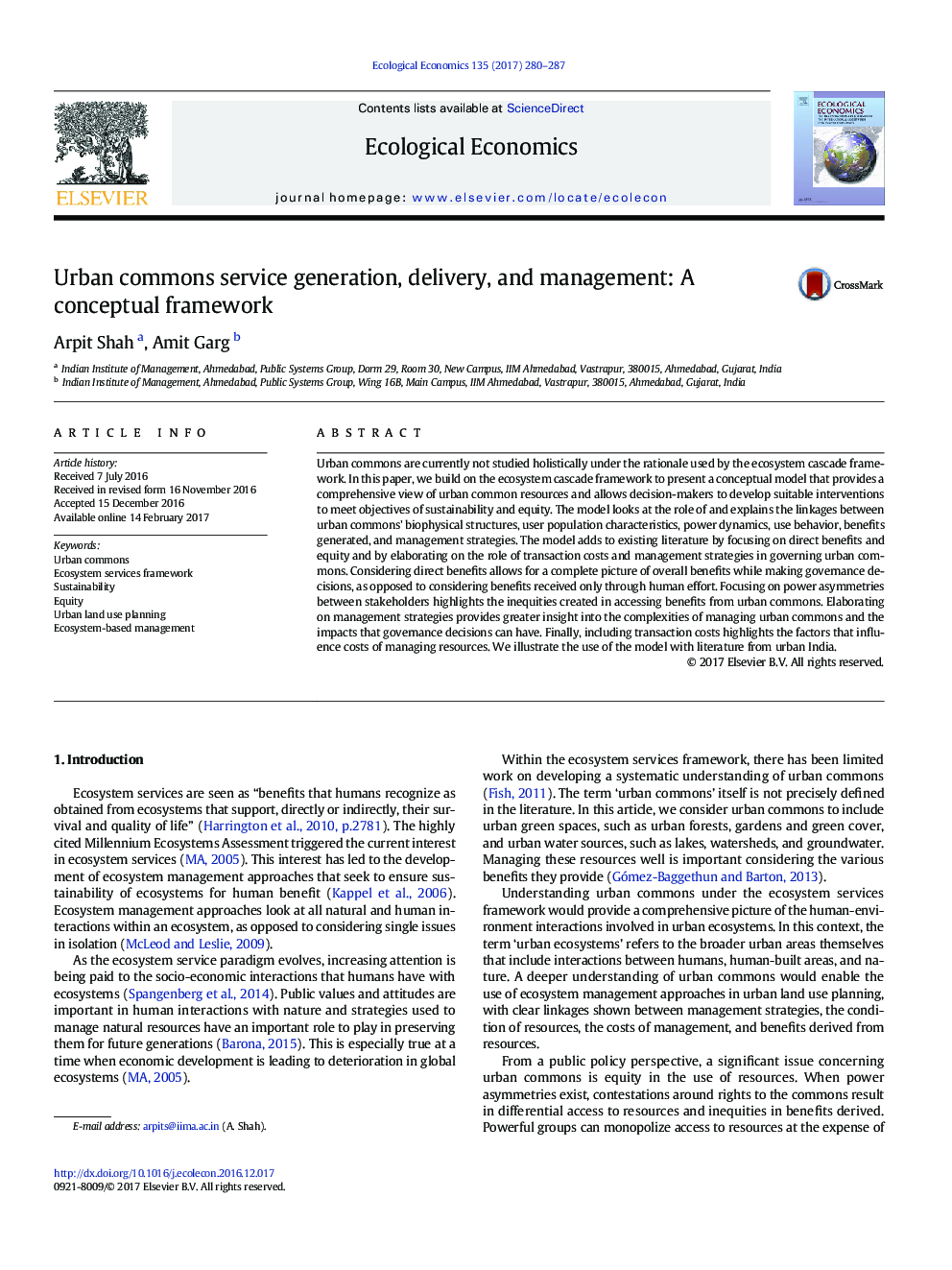| Article ID | Journal | Published Year | Pages | File Type |
|---|---|---|---|---|
| 5048790 | Ecological Economics | 2017 | 8 Pages |
â¢We propose a conceptual model for studying urban commons under the ESS framework.â¢Our model includes direct benefits to allow for a comprehensive view of benefits.â¢We highlight the roles of transaction costs and property rights.â¢We look at how power asymmetries create inequities in benefits derived.â¢The use of the model is illustrated using literature from urban India.
Urban commons are currently not studied holistically under the rationale used by the ecosystem cascade framework. In this paper, we build on the ecosystem cascade framework to present a conceptual model that provides a comprehensive view of urban common resources and allows decision-makers to develop suitable interventions to meet objectives of sustainability and equity. The model looks at the role of and explains the linkages between urban commons' biophysical structures, user population characteristics, power dynamics, use behavior, benefits generated, and management strategies. The model adds to existing literature by focusing on direct benefits and equity and by elaborating on the role of transaction costs and management strategies in governing urban commons. Considering direct benefits allows for a complete picture of overall benefits while making governance decisions, as opposed to considering benefits received only through human effort. Focusing on power asymmetries between stakeholders highlights the inequities created in accessing benefits from urban commons. Elaborating on management strategies provides greater insight into the complexities of managing urban commons and the impacts that governance decisions can have. Finally, including transaction costs highlights the factors that influence costs of managing resources. We illustrate the use of the model with literature from urban India.
